This content has been archived. It may no longer be relevant
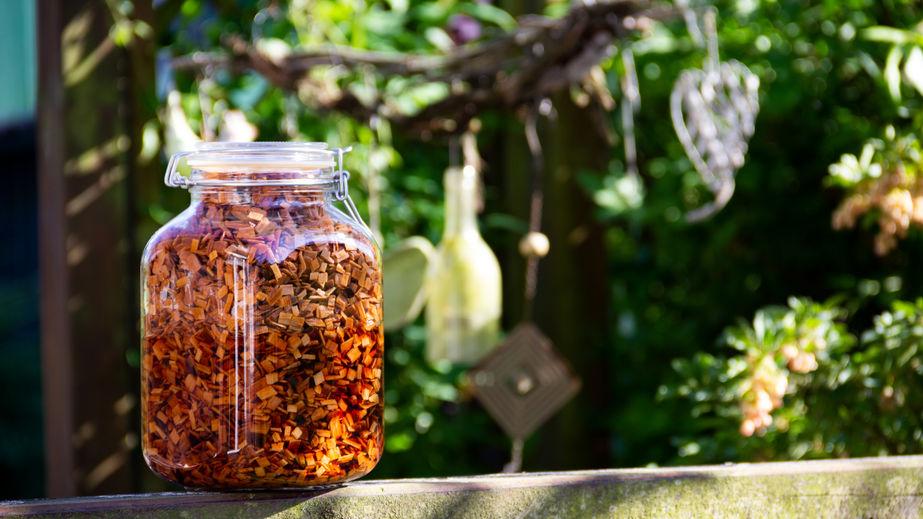
Using woodchips on a gas grill is a fantastic way to infuse your food with delicious smoky flavors.
While gas grills are known for their convenience and ease of use, adding woodchips can elevate your grilling game by imparting a natural smoky aroma and taste to your meats, vegetables, and other grilled dishes.
In this article, we’ll explore the basics of using woodchips on a gas grill, including the benefits, types of woodchips, preparation techniques, placement methods, and safety tips to help you achieve the perfect smoky flavors in your grilled meals.
Get ready to take your gas grilling to the next level with the wonderful world of woodchips!
Benefits of Using Woodchips for Flavor on a Gas Grill
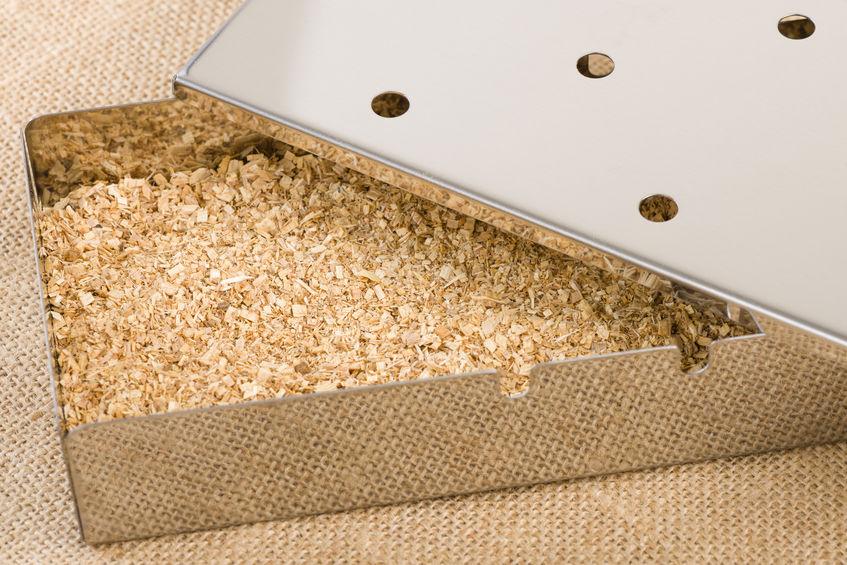
Adding woodchips to your gas grill can bring a plethora of benefits in terms of flavor enhancement.
Here are some key benefits of using woodchips for flavor on a gas grill.
- Authentic Smoky Flavors. Woodchips provide an authentic smoky flavor to your grilled food that cannot be replicated by gas alone. The natural flavors from different types of woodchips can add depth and complexity to your grilled dishes, giving them a delicious, smoky profile that is reminiscent of traditional wood-fired grilling.
- Customizable Flavors. One of the significant advantages of using woodchips is the ability to customize the flavors according to your preference. Different types of wood, such as mesquite, hickory, apple, cherry, and more, offer unique flavors that can be matched with different types of food for a personalized grilling experience. You can experiment with different woodchips to create your own signature flavor profiles.
- Versatility. Woodchips can be used with various types of food, including meats, vegetables, and even fruits, providing a versatile option for adding smoky flavors to a wide range of dishes. From steaks and ribs to poultry, seafood, and even pizza, woodchips can elevate the taste of almost anything you grill on your gas grill.
- Enhanced Aroma. The aromatic smoke from woodchips can add an enticing aroma to your grilled food, enhancing the overall sensory experience of your meal. The aroma of the wood smoke can waft through the air, creating a mouthwatering scent that can make your grilling session even more enjoyable.
- Easy to Use. Incorporating woodchips into your gas grilling routine is simple and easy. With just a few steps, you can add woodchips to your gas grill and start enjoying the benefits of smoky flavors without the need for a dedicated wood or charcoal grill. It’s a convenient way to infuse your food with delicious smoky flavors without the hassle of managing a traditional wood fire.
Overall, using woodchips on a gas grill can enhance the taste, aroma, and versatility of your grilled food, allowing you to create unique and delicious flavor profiles for an elevated grilling experience.
Types of Woodchips for Grilling
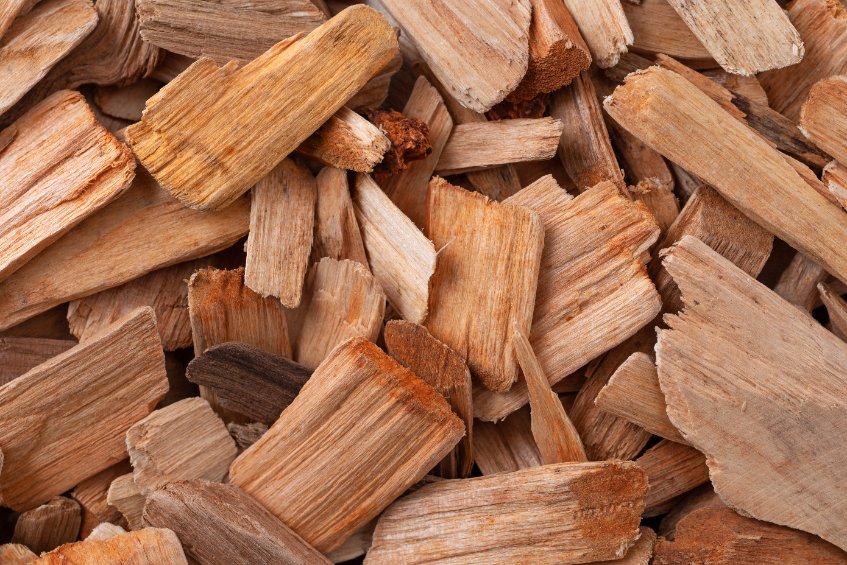 When it comes to using woodchips for grilling on a gas grill, there are a variety of options to choose from, each with its distinct flavor profile.
When it comes to using woodchips for grilling on a gas grill, there are a variety of options to choose from, each with its distinct flavor profile.
Here are some popular types of woodchips that are commonly used for grilling.
- Mesquite. Mesquite woodchips are known for their bold and robust flavor, making them ideal for grilling red meats such as beef and lamb. They impart a smoky, slightly sweet flavor with a hint of spice, adding a southwestern twist to your grilled dishes.
- Hickory. Hickory woodchips are widely used for grilling and smoking due to their strong, intense, and slightly sweet flavor. They pair well with a wide range of meats, including pork, beef, poultry, and game meats, and can add a rich, bacon-like aroma to your grilled food.
- Apple. Apple woodchips are known for their mild and sweet flavor, which works well with poultry, pork, and seafood. They add a subtle fruity and slightly sweet taste to your grilled dishes, making them a popular choice for those who prefer a milder smoky flavor.
- Cherry. Cherry woodchips offer a delicate and sweet flavor profile that is ideal for lighter meats such as chicken, turkey, and fish. They impart a fruity and slightly tart taste, adding a touch of sweetness to your grilled food without overpowering the natural flavors of the meat.
- Maple. Maple woodchips are known for their mild and sweet flavor with a hint of smokiness. They work well with a variety of meats, including pork, poultry, and vegetables, and can add a subtle sweetness and smoky aroma to your grilled dishes.
- Pecan. Pecan woodchips offer a rich and nutty flavor with a hint of sweetness, making them suitable for grilling a wide range of meats, including beef, pork, poultry, and game meats. They can add a unique and distinctive taste to your grilled food, with a hint of smokiness.
- Oak. Oak woodchips are known for their versatile flavor profile, which can vary depending on the type of oak used, such as red oak, white oak, or post oak. Oak woodchips can impart a moderate smoky flavor with a touch of sweetness, making them suitable for various types of meat and vegetables.
These are just a few examples of the many types of woodchips available for grilling.
Other woodchips, such as cherry, peach, alder, and more, can also be used to add unique flavors to your grilled food.
Experimenting with different woodchip flavors can be a fun way to create your own signature taste and aroma for your grilled dishes.
It’s essential to choose woodchips that complement the type of food you’re grilling and match your personal taste preferences to achieve the desired flavor profile.
Preparing Woodchips for Use on a Gas Grill
Preparing woodchips for use on a gas grill is a straightforward process that involves a few simple steps.
Here’s how you can prepare woodchips for use on your gas grill.
- Choose the Right Woodchips. Select the type of woodchips that best match your desired flavor profile and the type of food you’ll be grilling. Consider the intensity of the flavor and the strength of the smoke that the woodchips will impart to your food.
- Soak the Woodchips. Soaking the woodchips in water is a crucial step to ensure that they produce smoke instead of catching fire and burning too quickly. Place the woodchips in a bowl or a container and cover them with water. Let them soak for at least 30 minutes to an hour, or even overnight for more intense flavor.
- Drain the Woodchips. After soaking, drain the woodchips and remove any excess water. You can use a colander or a fine-mesh strainer to drain the woodchips thoroughly, so they are damp but not dripping wet.
- Create a Woodchip Packet. To prevent the woodchips from falling through the grates of your gas grill, you can create a woodchip packet. Take a large piece of aluminum foil and place the soaked woodchips in the center. Fold the foil to create a packet, leaving some room for the woodchips to release smoke.
- Poke Holes in the Foil Packet. Use a fork or a knife to poke several holes in the top of the foil packet. These holes will allow the smoke to escape and infuse your food with the desired flavors.
- Preheat the Gas Grill. Preheat your gas grill to the desired temperature for grilling your food. It’s essential to have a hot grill to generate smoke from the woodchips.
- Place the Woodchip Packet on the Grill. Once your gas grill is preheated, place the foil packet with the woodchips directly on the heat source, such as the burner or the lava rocks. If your gas grill has a smoker box, you can also place the soaked woodchips directly in the smoker box.
- Close the Lid and Start Grilling. Close the lid of your gas grill to trap the smoke inside and let it infuse your food with the smoky flavors. Begin grilling your food as usual, and let the woodchips work their magic by adding delicious smoky flavors to your grilled dishes.
Remember to monitor the woodchips during grilling and add more soaked woodchips as needed to maintain a steady smoke production.
Avoid adding dry woodchips to the grill as they may burn too quickly and produce bitter flavors.
With proper preparation and usage, woodchips can elevate the taste and aroma of your grilled food, providing a unique and flavorful grilling experience on your gas grill.
Soaking Woodchips for Added Flavor
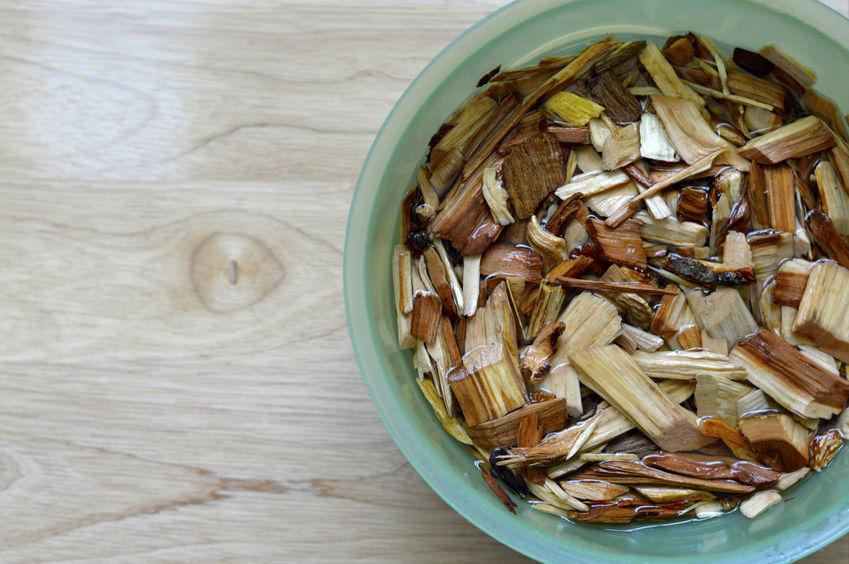
Soaking woodchips before using them on a gas grill is a crucial step that can enhance the flavor of your grilled food.
Soaking woodchips helps to slow down the combustion process and produces more smoke, which imparts a desirable smoky flavor to your food.
Here are some tips for soaking woodchips for added flavor.
- Choose the Right Type of Wood. Select the type of woodchips that best complement the flavors of the food you’ll be grilling. Popular wood types for grilling include mesquite, hickory, apple, cherry, oak, and maple, each with its own unique flavor profile.
- Use Clean, Cold Water. Place the woodchips in a bowl or a container and cover them with clean, cold water. Avoid using hot or warm water, as it can extract bitter tannins from the wood and affect the flavor of the smoke.
- Soak for at Least 30 Minutes to an Hour. Let the woodchips soak in the water for at least 30 minutes to an hour, or even overnight for a more intense flavor. This allows the woodchips to absorb moisture and produce more smoke when they are placed on the hot grill.
- Drain Excess Water. After soaking, drain the woodchips and remove any excess water. You can use a colander or a fine-mesh strainer to drain the woodchips thoroughly, so they are damp but not dripping wet.
- Create a Woodchip Packet. To prevent the woodchips from falling through the grates of your gas grill, you can create a woodchip packet. Take a large piece of aluminum foil and place the soaked woodchips in the center. Fold the foil to create a packet, leaving some room for the woodchips to release smoke.
- Poke Holes in the Foil Packet. Use a fork or a knife to poke several holes in the top of the foil packet. These holes will allow the smoke to escape and infuse your food with the desired flavors.
Soaking woodchips before using them on your gas grill is a simple yet effective way to add delicious smoky flavors to your grilled food.
Experiment with different types of woodchips and soaking times to find the perfect combination that suits your taste preferences and elevates your grilling experience.
Placing Woodchips on a Gas Grill
Placing woodchips on a gas grill requires careful positioning to ensure they produce smoke and infuse your food with delicious smoky flavors.
Here’s how you can properly place woodchips on your gas grill.
- Create a Woodchip Packet. As mentioned earlier, you can create a woodchip packet using aluminum foil. Place the soaked woodchips in the center of a large piece of foil and fold it to create a packet, leaving some room for the woodchips to release smoke. Alternatively, if your gas grill has a smoker box, you can skip the foil and place the soaked woodchips directly in the smoker box.
- Choose the Right Location. The location for placing the woodchip packet or smoker box on your gas grill will depend on the type of gas grill you have. If your gas grill has lava rocks, you can place the woodchip packet directly on top of the lava rocks, above the burner. If your gas grill has heat shields or flavorizer bars, you can place the woodchip packet on top of them. If your gas grill has a dedicated smoker box, follow the manufacturer’s instructions on where to place it.
- Preheat the Gas Grill. Preheat your gas grill to the desired temperature for grilling your food. It’s important to have a hot grill to generate smoke from the woodchips.
- Place the Woodchip Packet on the Grill. Once your gas grill is preheated, place the foil packet with the woodchips directly on the heat source, such as the burner or the lava rocks. If you’re using a smoker box, place it in the designated location according to the manufacturer’s instructions. Ensure that the woodchip packet or smoker box is positioned in a way that allows it to produce smoke that will come into contact with your food as it cooks.
- Close the Lid. Close the lid of your gas grill to trap the smoke inside and let it infuse your food with the smoky flavors. This will help to create a flavorful and aromatic grilling experience.
- Monitor and Adjust. During grilling, keep an eye on the woodchip packet or smoker box to ensure that it continues to produce smoke. You may need to add more soaked woodchips to maintain a steady smoke production. Avoid adding dry woodchips, as they may burn too quickly and produce bitter flavors.
Proper placement of woodchips on your gas grill is essential for achieving the desired smoky flavors in your grilled food.
Experiment with different placements and types of woodchips to find the perfect combination that enhances the taste and aroma of your grilled dishes.
Managing Smoke Levels with Woodchips
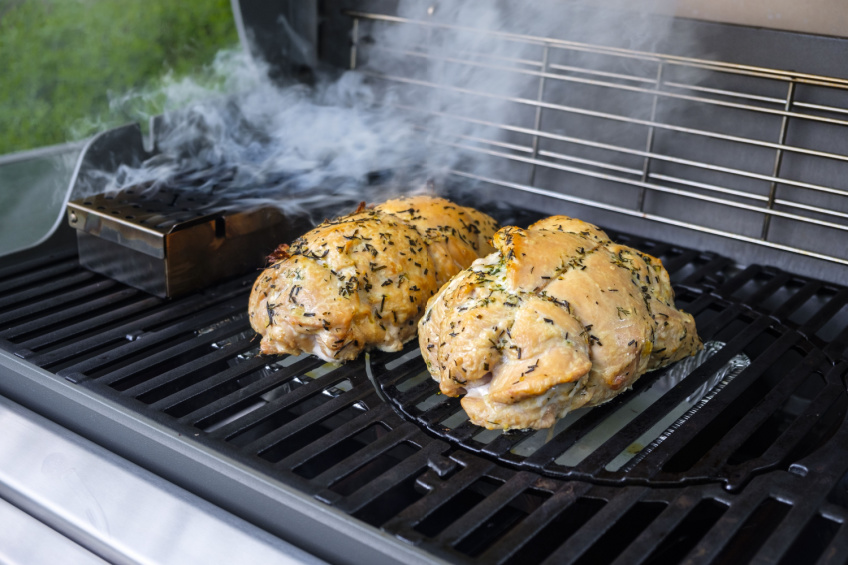 Managing the smoke levels when using woodchips on a gas grill is important to achieve the desired smoky flavor without overpowering your food with too much smoke.
Managing the smoke levels when using woodchips on a gas grill is important to achieve the desired smoky flavor without overpowering your food with too much smoke.
Here are some tips on how to manage smoke levels with woodchips on a gas grill.
- Soaking Time. The soaking time of woodchips can affect the smoke levels. Longer soaking times generally result in more smoke, while shorter soaking times produce milder smoke flavors. Experiment with different soaking times to find the right balance for your taste preferences.
- Amount of Woodchips. The amount of woodchips you use can also affect the smoke levels. Using too many woodchips can create excessive smoke, while using too few may result in a weaker smoke flavor. Start with a moderate amount of woodchips and adjust according to your preference and the type of wood you’re using.
- Positioning of Woodchip Packet or Smoker Box. The position of the woodchip packet or smoker box on your gas grill can also impact the smoke levels. Placing it closer to the heat source, such as directly on the burner or lava rocks, can result in more intense smoke, while placing it further away can produce milder smoke flavors. Experiment with different positions to find the right balance of smoke levels for your liking.
- Heat Control. Managing the heat on your gas grill can also impact the smoke levels. If you want more smoke, you can lower the heat on your gas grill to allow the woodchips to smolder and produce more smoke. If you want less smoke, you can increase the heat to reduce the amount of smoke produced. Finding the right heat setting for your desired smoke levels may require some trial and error.
- Timing. Timing is crucial in managing smoke levels with woodchips. It’s important to add the woodchips at the right time during the grilling process to ensure they produce the desired amount of smoke. Adding them too early may result in excessive smoke, while adding them too late may not allow enough time for the smoke to infuse into your food. Follow the recipe or your own experimentation to determine the best timing for adding woodchips to your gas grill.
- Airflow. Proper airflow in your gas grill is important for managing smoke levels. Make sure the vents on your gas grill are properly adjusted to control the airflow. Adjusting the vents can help you regulate the amount of oxygen that reaches the woodchips, which can affect the smoke levels.
- Experiment and Adjust. Every gas grill and wood type may produce different smoke levels, so don’t be afraid to experiment and adjust to find the right balance of smoke for your taste preferences. Keep a close eye on the smoke levels during grilling and adjust the soaking time, amount of woodchips, positioning, heat control, timing, and airflow as needed to achieve the desired smoke levels.
Managing smoke levels with woodchips on a gas grill requires some experimentation and adjustments to find the perfect balance for your taste preferences.
By following these tips and being mindful of the variables that can affect smoke levels, you can achieve delicious smoky flavors in your grilled food without overpowering it with excessive smoke.
Bottom Line – Enhance Your Grilling with Woodchips on a Gas Grill
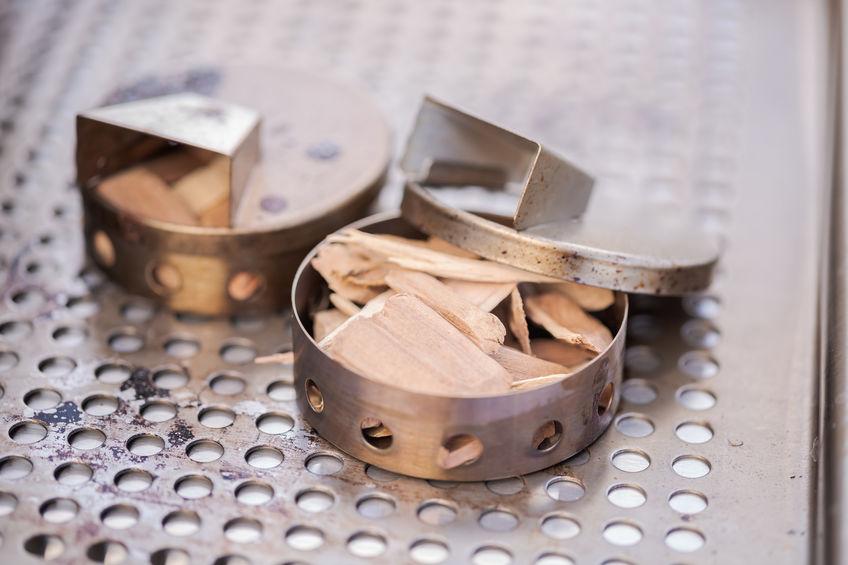
Using woodchips on a gas grill is a fantastic way to enhance the flavor of your grilled dishes.
From adding smoky undertones to infusing unique wood flavors, woodchips can take your grilling game to the next level.
By choosing the right type of woodchips, properly preparing and soaking them, managing smoke levels, and experimenting with different wood flavors, you can elevate the taste of your grilled food and impress your family and friends with delicious and aromatic results.
So, fire up your gas grill, grab some woodchips, and get ready to take your grilling experience to new heights!
